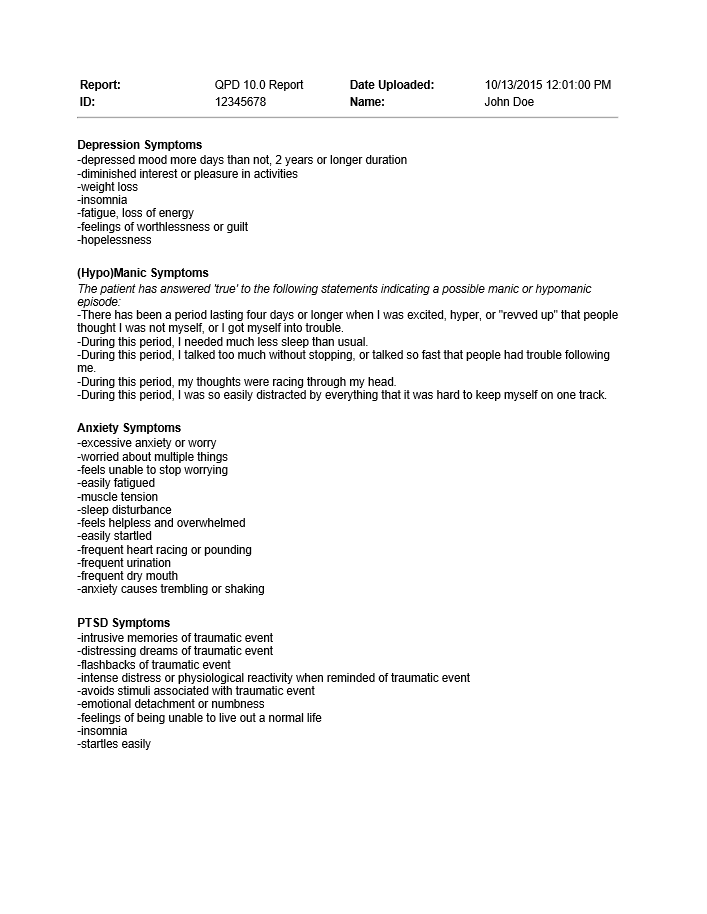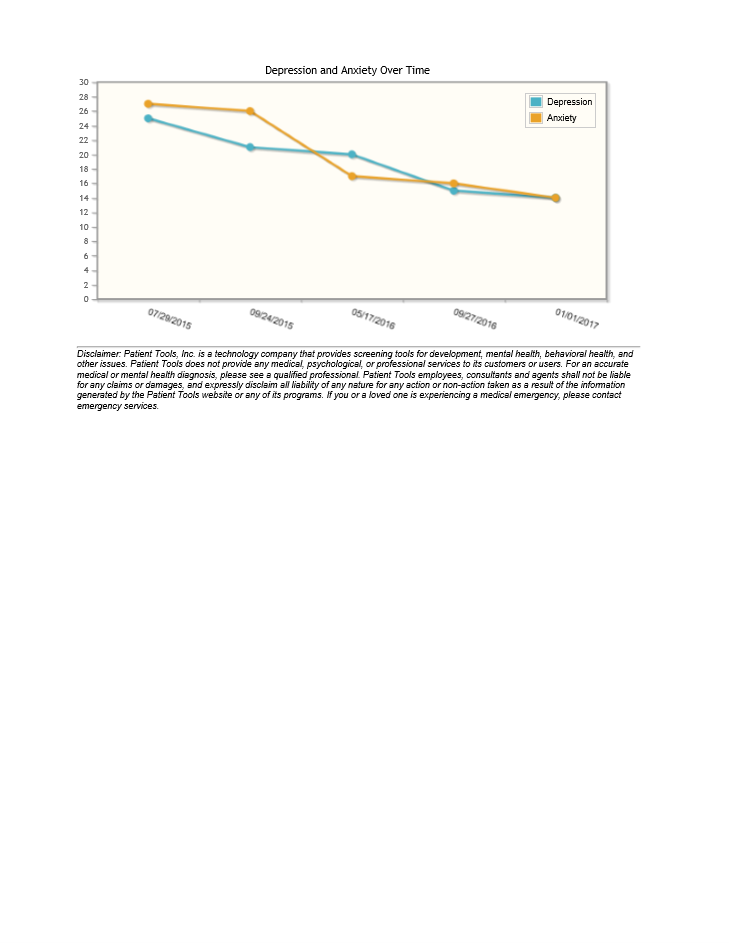|
The QPD, Quick PsychoDiagnostics Panel is an in-depth computer assessment that quickly and accurately identifies psychiatric disorders. This mental health assessment has excellent sensitivity, specificity and has been validated against the SCID structured psychiatric interview, widely considered the gold standard for psychiatric diagnosis.
Answering true/false questions the self-report assessment screens for 11 DSM-5 psychiatric disorders such as major depression (MD), generalized anxiety disorder (GAD), panic disorder, and obsessive compulsive disorder (OCD). It also screens for suicidality, recent physical or sexual abuse, and (optionally) danger to others. Two other features of the assessment are that it screens for a range of disorders commonly seen in primary care, including substance abuse and it can be given in client entered automated form.
After an approximately 10 minute interview, medical providers immediately receive a chart-ready assessment report with actionable information for treatment decisions. The software incorporates advanced logic and branching. Algorithms determine which questions are presented based on responses to previous questions. Patients who do not have a psychiatric disorder are not asked irrelevant questions, and patients who may have disorders are examined in depth.
The QPD Panel may be useful for alerting physicians to the possibility of psychological disorder and its subtypes, auditing patients about their unmet needs, early detection and treatment, assessing change, and assisting in teaching.
Fast and easy to use, the PTI App version of the QPD Panel is an economical, reliable and validated method to assess mental health disorders. Questions are presented one at a time with a single click answer to advance to the next question. The question format automatically adapts to the respondents device (smartphone, tablet or PC) making the PTI App version of the QPD Panel ideal for mobile devices. Using PTI data services, when a questionnaire is complete it is immediately scored electronically and an in-depth report with summary and trending analysis is generated. Results can be printed, loaded into an EMR/EHR and are available as a PDF.
Validation study for the QPD Panel can be found at:
Digital Diagnostics – QPD Panel
|





